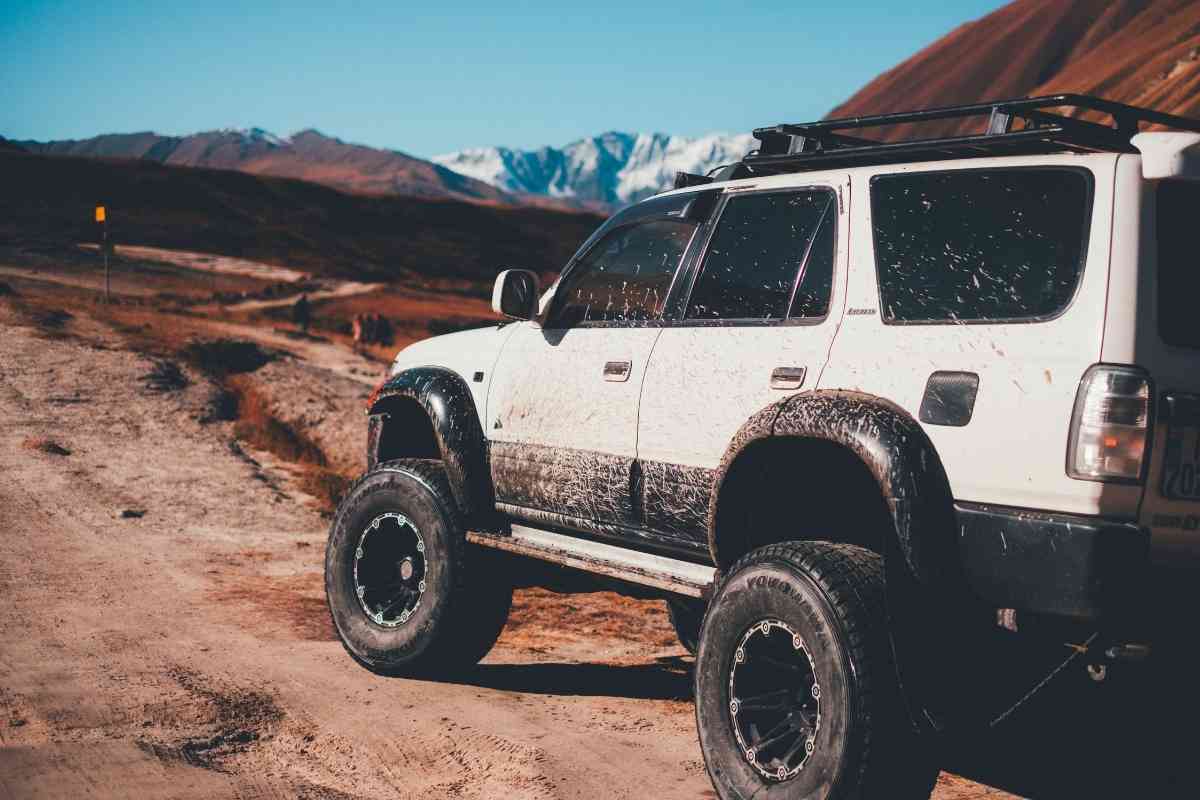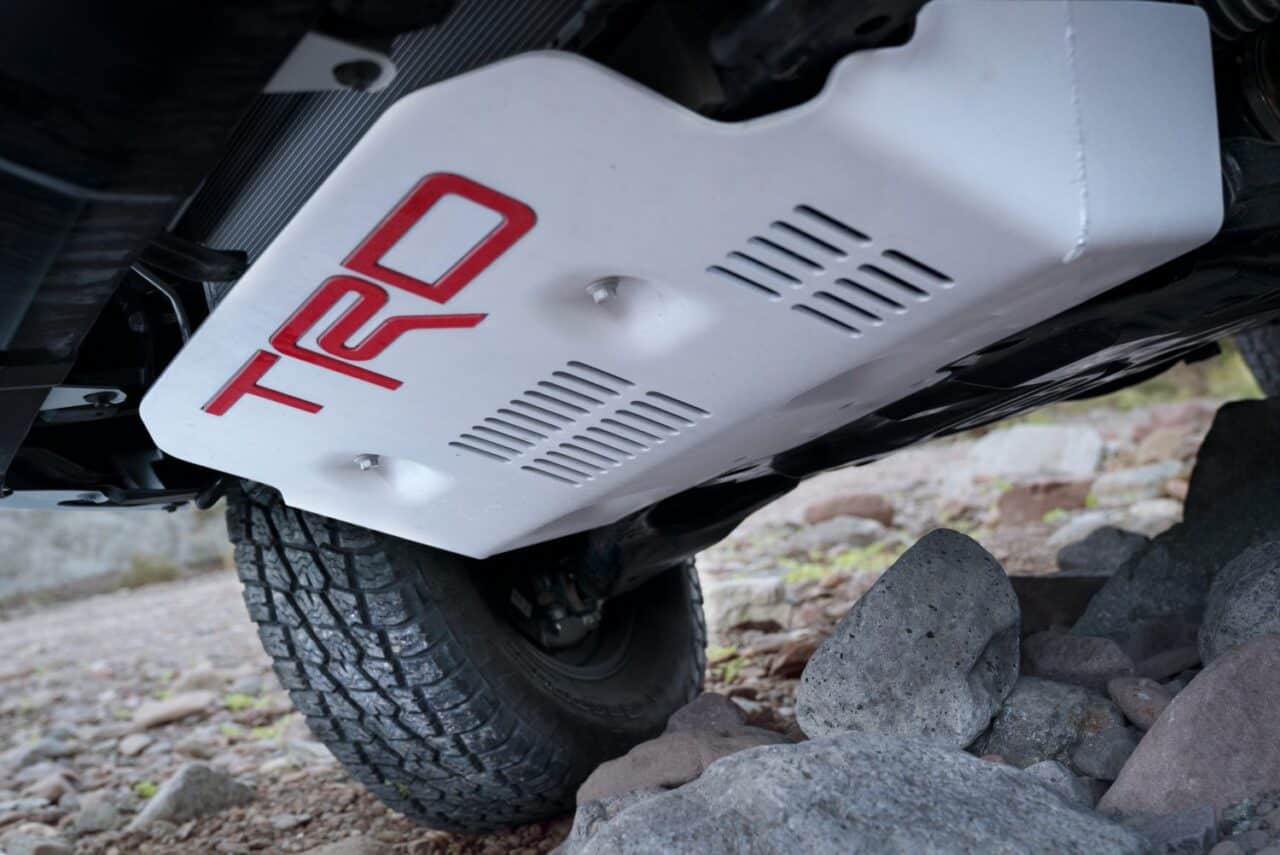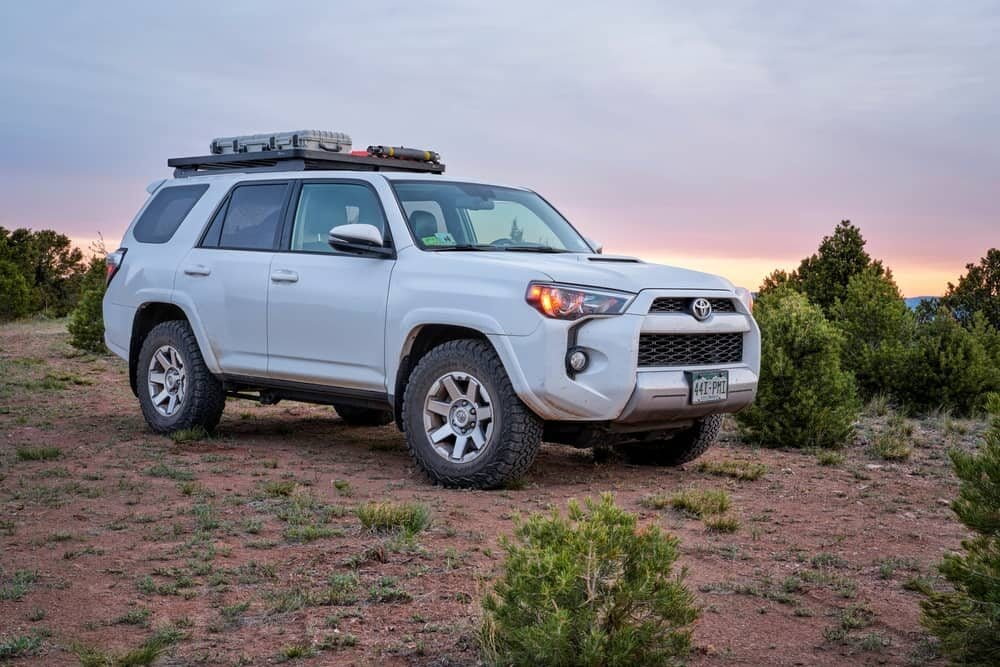Can You Put 35s On A 4Runner?
If you love to take your 4Runner offroad but feel like your truck’s a little lacking, you might’ve considered putting some bigger tires on to expand your vehicle’s capabilities.
But what size should you use?
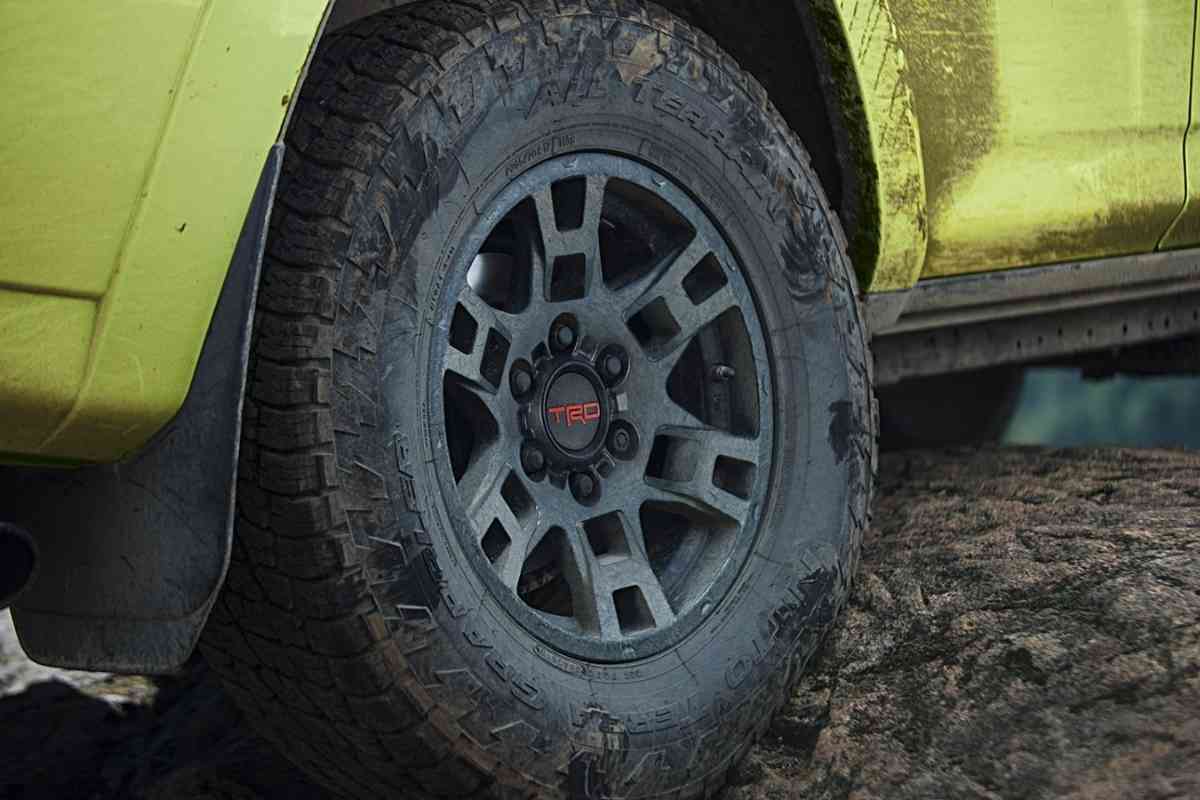
35s are a popular choice for beefing up your offroad vehicle. They’re tougher, taller, and give you more clearance over bumpy terrain. When you’re a lover of rugged roads, 35s are an excellent choice. Keep reading for a discussion of whether or not 35s are a good choice and how to add them.
Can You Put 35s on a 4Runner?
You can put 35s on a Toyota 4Runner, but there are caveats. To install 35s on your 4Runner, you’ll need to make a few modifications to avoid rubbing that may or may not be worth it financially. If you want to beef up your tire game, you’ll need to look at modifying your fenders, body, and suspension.
Since the 4Runner rolled off assembly lines in 1984, there’ve been a few variations in stock tire and rim sizes.
Although you can find 35s for nearly any rim size, the stock tire size will give you an idea of how much modifying you’ll need to do to put 35s on your 4Runner.
| Rim Size | Years | Tire Size (Stock) |
| 15” | 1984-2002 | 225/75/16 (29.3”) |
| 16” | 1986-871996-2009 | 275/70/16 (31.2”) |
| 17” | 2003-2009 | 265/65/17 (30.5”) |
| 17” | 2010-2020 | 265/70/17 (31.6”) |
| 18” | 2006-2009 | 265/60/18 (30.5”) |
| 20” | 2010-2020 | 245/20/60 (31.6”) |
A standard 4Runner comes with 29-32-inch tires, depending on generation.
However, with a 3-inch lift kit, you can easily fit 31-33-inch tires.
Still, if you want to go above that, you’ll have to do more modifications to accommodate the extra few inches for your 35s.
What’s Good About 35s?

There’s no question that increasing your tire size will give you more flexibility offroad.
However, swapping your stock tires for 35s has its downsides, too.
Pros
- Higher clearance
- More off-road capabilities
- Deeper ford depth
- Improved appearance
- Better in the snow and deeper mud
- Better rollover for trail obstacles
Cons
- Decreased gas mileage
- Tires can be more expensive
- Require significant modifications
- More stress on your drive train
- Might need to regear
- Decreased performance
What Modifications Are Needed to Put 35s on Your 4Runner?
If you’ve committed to mounting 35s on your truck, be prepared for some pretty significant modifications.
You’ll be looking at one or more of the following alterations to your vehicle.
Suspension Lift
A suspension lift kit is the main modification you’ll need to fit 35s on your 4Runner.
This modification will lift your truck up to give you the ground clearance you’ll need for bigger tires.
Although some people might attempt it with a 3-inch kit and some other mods, I’d strongly recommend considering a 5-6-inch lift kit to give your tires the proper clearance.
Body Lift
Lifting the body of your 4Runner can also help you get a bit more space for bigger tires.
However, I should caution you that this is very dependent on your intended use.
If you just want something for everyday driving, a body lift might be fine for getting 35s to fit.
You might run into some cornering issues, though.
That said, a body lift doesn’t do anything to lift your suspension.
So if you plan to use your truck offroad, a simple body lift won’t help much and will likely lead to damage.
Combo Lift
Your best bet is a combo lift if you’re doing off-roading with 35s.
You want to get a solid 5-6 inches of lift to fit your new tires, and the best way to do that is by lifting your body and suspension.
Using a suspension lift and body lift, you’ll get both the height you need to accommodate 35s and the ground clearance necessary for off-roading on bigger tires.
Upgrade Suspension
You’ll also need to consider upgrading your suspension when you put bigger tires on.
35s are a lot bulkier than the stock tires that came on your vehicle, so your stock suspension may not be up to the task of handling such heavy tires.
Adding new springs will help you feel more solid on the road, and it’ll take some of the pressure off the rest of your vehicle.
Trimming
Even with the best lift kit or kits, you’ll probably need to do some trimming to prevent any significant rubbing issues on your 4Runner when you put 35s on.
To start, your fenders will need some adjustments. You can put extenders on, but you can also trim up the bottom edges to make more for your tires.
You’ll also need to give some attention to the wheel wells and trim up any in-the-way areas there, too.
Front pinch welds are another area that you might have to address, too.
Lastly, you can take a look at the firewall.
The firewall tends to be where the most rubbing happens on a truck with 35s.
If you want to modify your vehicle to fit your new tires, cutting off certain sections of the firewall and replacing them with sheet metal is an option.
Bump Stop Extenders
Another step to help keep your tires from destroying your fenders is to add bump stop extenders, particularly in the rear.
Extended bump stops will prevent rubbing and give you a little more breathing room when going over large obstacles that would typically lead to full compression.
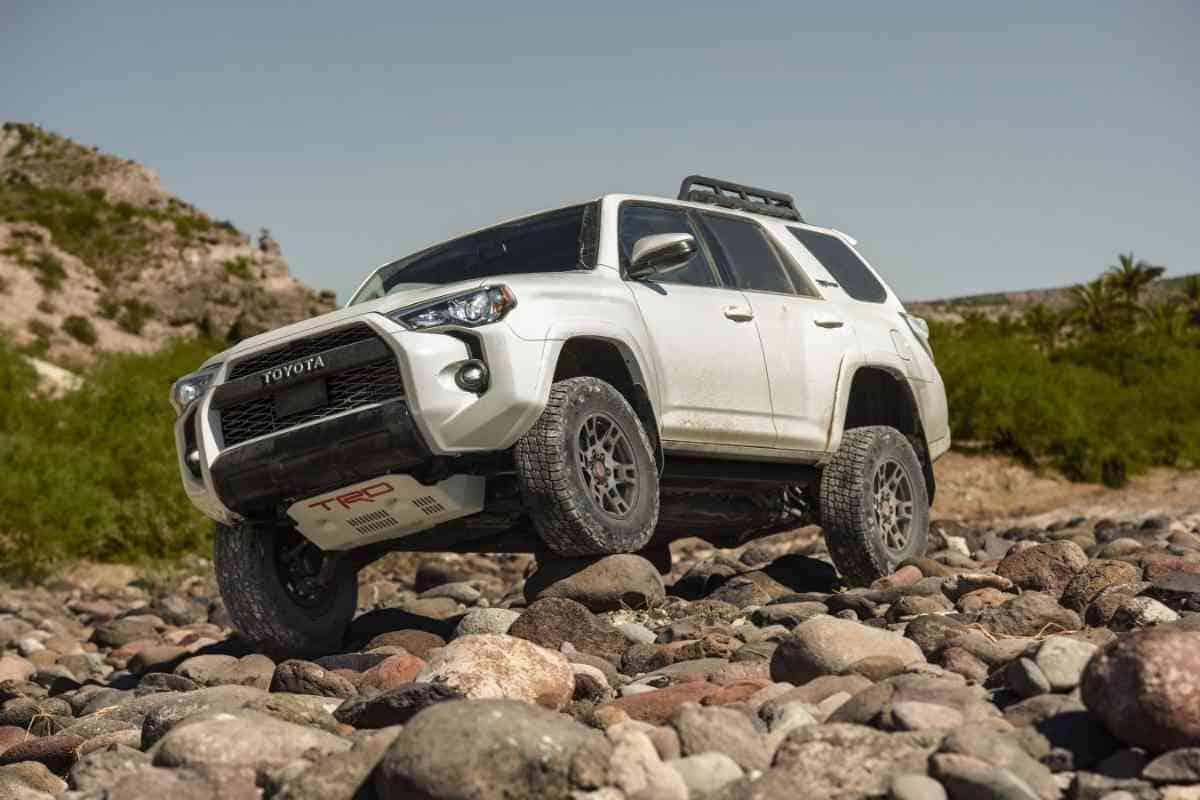
Are 35s Right for Your 4Runner?
We’ve covered the best ways to install 35s on your 4Runner.
But the real question is, just because you can put 35s on, does that mean you should?
Warranty Issues
You can modify your truck without voiding the warranty.
That said, if your vehicle takes damage that Toyota determines was due to the modifications, you’ll be on the hook for repairs.
Those modifications include the tires, changes in your suspension, any trimming or welding, along with regearing.
Transmission
Bigger tires will put more stress on your transmission, and as we all know, a transmission fix isn’t cheap.
You can consider regearing as a way to take some of the pressure off.
It’s a tedious process that’s better left to professionals, but it’s a project you can take on if you have the know-how or desire to learn.
Other Added Costs
Bigger tires lead to more weight, which leads to increased stress on many components of your truck.
In particular, you’re looking at more frequent repairs or replacements of:
- CV joints
- Tie-rods
- Axle shafts
- Ball joints
In addition to the added frequency of repairs, a heavier truck will also cause your gas mileage to take a hit.
Your 4Runner will be working hard, so it’ll be burning through fuel much more quickly than it would under normal circumstances.
More 4Runner Resources
If you enjoyed reading about the Toyota 4Runner, you will surely appreciate my other related articles. These articles delve deeper into specific aspects of the 4Runner such as its off-road capabilities, interior design and technology features.
Additionally, I have compared the 4Runner to other popular SUVs in its class to help you make an informed decision about your next vehicle purchase. Give them a read; I am sure you will find them as interesting and informative as the first article.
Final Thoughts
Adding 35s to your 4Runner comes with some pros and cons.
Trying to fit them onto your truck without any mods will be near impossible.
But as long as you’re up for the task of lifting and trimming, having 35s on your vehicle will give your truck a great look and give you a lot more places to go.

